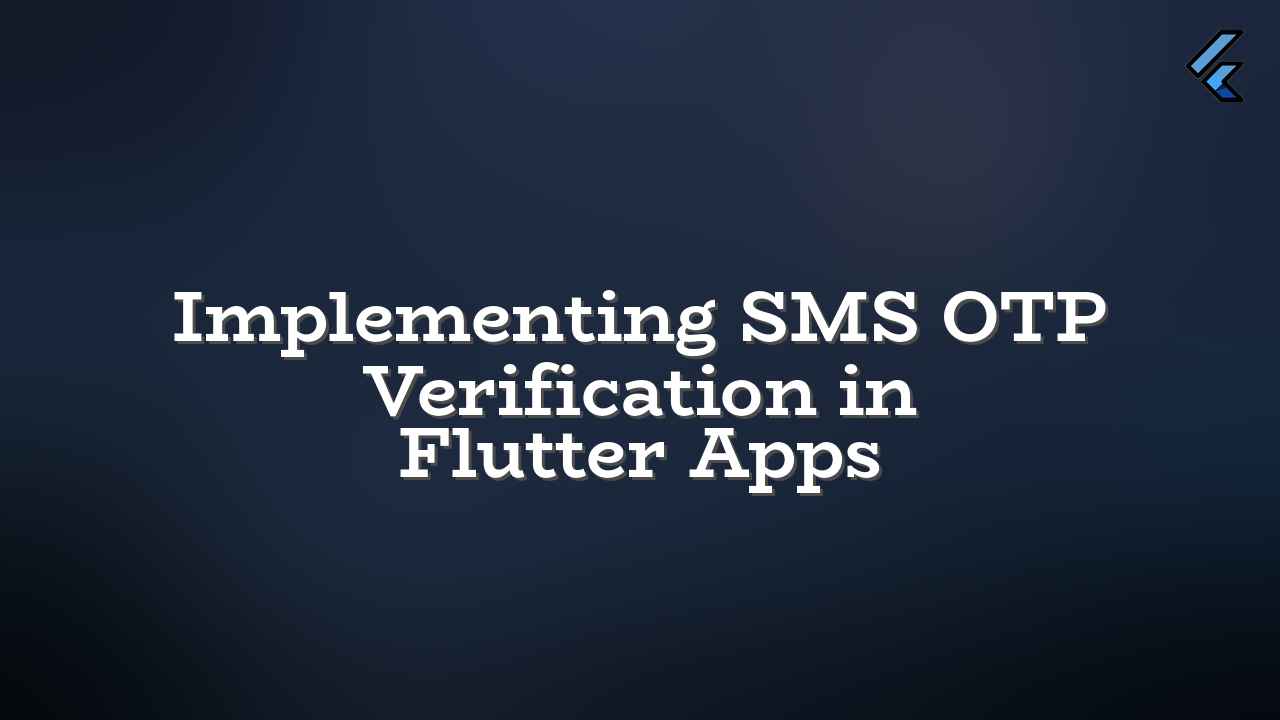This article details how to implement SMS-based OTP verification in Flutter applications, addressing cost-effectiveness and efficiency. It explores third-party providers and in-house solutions, while outlining potential error handling strategies.
Choosing the Right Verification Method
Implementing OTP verification directly in your application can be complex and may not comply with regulatory requirements. Leveraging third-party services is often the most efficient and cost-effective approach.
Third-Party Providers (Recommended)
- Twilio: A popular choice known for its robust SMS capabilities and a free tier for small projects. You can send and receive OTPs, manage user accounts, and leverage their API for integration.
- AuthKey.io: Another reliable provider offering SMS verification. Similar to Twilio, AuthKey.io allows for easy integration and has a free tier to explore.
- FastSMS: This service offers SMS verification, and potentially has a free tier or a cost-effective pricing structure.
- 2Factor.in: Another reputable service for SMS OTP verification. Check their pricing plans to ensure it aligns with your project’s needs.
These providers usually offer well-documented APIs for Flutter integration. They often have excellent developer support and handle compliance and regulatory requirements.
In-House SMS Verification (Potentially Inefficient and Complex):
Developing an in-house SMS verification system should be avoided unless essential for extremely specific compliance or security needs. It presents challenges with regulatory compliance, infrastructure management, and security. Additionally, you’ll need to handle sending SMS messages and managing the OTP verification process.
Integrating a Third-Party Provider (Twilio Example)
Twilio’s API provides a straightforward method for SMS OTP verification. Here’s a simplified example using the Twilio Flutter plugin:
import 'package:twilio_flutter/twilio_flutter.dart';
// ... other imports
Future sendVerificationCode() async {
// Replace with your Twilio credentials
final accountSid = 'ACxxxxxxxxxxxxxxxxxxxxxxxxxxxxx';
final authToken = 'your_auth_token';
final twilioClient = TwilioClient(accountSid, authToken);
final message = await twilioClient.messages.create(
to: '+15551234567', // Replace with the user's phone number
from: '+11234567890', // Replace with your Twilio phone number
body: 'Your verification code is: 123456',
);
// Handle success/failure appropriately.
if (message != null) {
print('Message sent successfully');
// ... your subsequent handling ...
} else {
print('Message sending failed');
}
}
Error Handling and Common Issues
Potential errors during SMS OTP verification:
- Invalid Credentials: Double-check your credentials with the third-party provider to avoid connection issues.
- Network Connectivity Issues: Implement robust error handling to deal with network interruptions during message sending and verification.
- SMS Limitations: Be aware of potential message limits and throttling policies for your provider. Manage cases where messages are blocked or fail to deliver due to excessive attempts.
- Rate Limiting: Respect rate limits and avoid excessive verification requests to maintain a good account standing with your provider.
- User Input Errors: Validate user input to ensure a valid phone number before sending the OTP.
Important Note: Always refer to the specific documentation of the chosen SMS provider for their API calls, request formats, and error handling procedures. The examples are for illustration and need adaptation.
Conclusion
Utilizing third-party SMS verification services like Twilio significantly simplifies implementation and addresses compliance concerns. Thoroughly research provider pricing, choose a suitable API, and plan for error handling to build a robust and efficient OTP verification system in your Flutter application.

